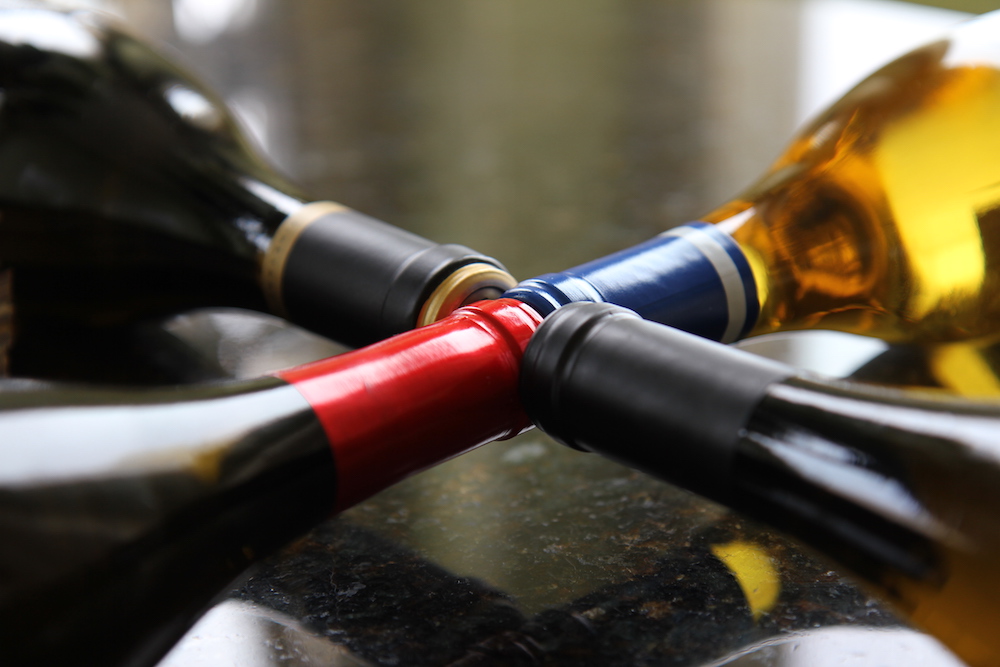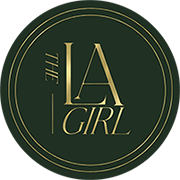It’s National Wine Day! We talked to David Hewlett, CEO of Chardonnay Box, to give us his expert tips on how to choose the right wine for dinner. For wine connoisseurs, this might be an easy task but for some it’s a really hard thing to do. So we called in the expert and here are his tips.
1. When in doubt bring the bubbly
Oddly enough, if you have no idea what’s on the menu, one of the best wines to bring is a champagne or sparkling wine. You’d be amazed how many dishes pair well with it. My most recent sparkling wine and food pairing surprise was sushi – the two go great together!
If you are not feeling the bubbly, try bringing a wine that everyone can drink before the dinner starts. This way you don’t have to stress about bringing a wine that would not pair well with a certain dish. You have a couple of options here:
White
Chardonnay is a great choice. Whether it’s crisp and clean or rich and buttery, chardonnay is the most consumed wine in the United States, so there is a high chance you will have a happy audience.
If you want to go off the beaten path and look like a real wine connoisseur, look for an Albariño (or Alvarinho – same thing but from Portugal). Albariños are great ‘anytime’ wines from Spain.
Red
Pinot noir is a great all around choice. If you like your wines with a lot of fruit, buy a bottle of California or Oregon pinot noir. If you like more earthy tones, look for a French pinot noir from Burgundy. Your best bet is the Côte de Nuits or Côte de Beaune regions. Other good options are zinfandels from California, a chianti from Tuscany or a malbec from Argentina.
2. Take into account your guests’ wine preferences
Red wine to white wine is like apples are to oranges – completely different! For most of my meals, I like to start with a white wine while people mingle and munch on appetizers, then switch to a red for the main course. In the end, it really comes down to the personal preference of your dinner table companions.
Ask your guests what they like and do your best to accommodate them. Even a great wine pairing won’t work if one of your guests really dislikes a style of wine.

3. Choose wines that are sure to impress your guests or hosts
Almost any major wine region has famous wineries with world renowned wines. I could list tons, but will stick to a few that your guests/hosts may recognize:
o California, USA: Silver Oak, Opus One
o Champagne, France: Dom Pérignon
o Bordeaux, France: Château Margaux
o Tuscany, Italy: Brunello di Montalcino
o South Australia, Australia: Penfolds Grange
Again, experts will argue over which wines should be on this list, but at least these will get you started. Also, there are wines from each of these regions that are just as good, if not better, than these name-brand wines.
One thing to note about French wines…in a clever marketing effort, some French wineries in towns where a famous wine is from started labeling their bottles with the “Town Name-Famous Name.”
For example, Chambertin is a famous vineyard in Burgundy, within the town limits of Gevrey. Other Gevrey wines might be labeled as Gevrey-Chambertin, piggybacking off the famous winery name. If you are hoping for the real wine, it will only be labeled as Chambertin.
4. Some wines to avoid
For the most part wine is a personal preference. If it’s in the store, or on the wine list, it means that somebody out there likes it. I think I can safely recommend that if the wine comes in a gallon jug or box/bag (apart from some newer wines that are choosing this packaging), you most likely are not going to get a fine wine. However, if you are in college and want to play slap the bag, by all means go for it!

5. Pair your wine choice with your dinner menu
There are many ways to thinking about pairing wine with food. Start by considering the different ingredients, beginning with the “star” of the dish (which is typically the protein). The secondary consideration should be the sauce.
When picking the wine, you want to match the intensity of the food with the intensity of the wine. For instance, you would never pair grilled chicken and rice with a big tannic cabernet sauvignon, and likewise you would never pair a light rose with a ribeye steak.
Salt in a dish will reduce your palate’s perception of acidity. I suggest either a highly acidic wine (like a French sauvignon blanc) or a sweeter wine to get that sweet and salty pairing. Animal fats in food pair well with wines that have a lot of tannins. A ribeye steak goes great with a cabernet sauvignon. Often hillside cabs will have more tannins than valley floor cabs.
If you are serving a sweeter dish, you will want to pair with a sweet wine. Your wine should always be sweeter than the dish, or it will just taste bone dry. Acids and tannins do not mix! So, don’t go pairing that big red wine with a vinaigrette salad dressing.
If you have more spice in your food, you will be best off pairing with a sweeter wine or a wine with lower alcohol content. I have done some great spice pairings with zinfandel wines that bring out nice, peppery flavors in the wine.
6. Don’t waste good wine on newbies
I love sharing my expensive reds when I know the company will appreciate it, however, if I’m having a bunch of wine newbies over, I tend to gravitate towards a $15-$25 bottle of wine. It’s important to note that If you are going to a restaurant, there may be a corkage fee (usually between $15-$30).
Also, at some restaurants if they carry the wine you brought, you will need to order it from the restaurant at their price. I suggest checking the restaurant’s wine list before bringing a bottle for dinner.
7. Look for bottles that will give you the most bang for your buck
There many great wine options out there when it comes to getting the most bang for your buck. Part of this skill comes from knowing retail pricing and/or restaurant pricing for certain wines. For example, I have been to some nice restaurants that sell Rombauer chardonnay for $60 a bottle, while others sell it for $90 a bottle. At $60 a bottle I will order Rombauer all night! If you know the wine prices at your local store, you can get a feel for what the markups may be.
Using Rombauer chardonnay again, at my local store it is generally $32-$36 a bottle. If a restaurant sells it for $90 a bottle, there is a good chance many of their wines will be overpriced. If this is the case, your best bet is to go for the famous “second cheapest wine.” However, if you see it at $60/bottle, even if you don’t want the Rombauer, there is a good chance there aresome great deals on wine at the restaurant.
Overall, your best bet is to get away from big name wine regions. Try a pinot noir from Oregon, or a Malbec from Chile. If you are buying a California wine, look for a wine from a less recognized region of the state (i.e. Monterey, Livermore, Mendocino, Santa Maria Valley or Santa Lucia Valley). These regions are making some good wines without the brand name prices of Napa or Sonoma.
8. Know the difference between dry versus sweet wines
It is important to know the difference between these wines when pairing with food and/or when buying wine for someone who prefers one or the other. Pairing a food with the wrong wine can often make both the food and the wine taste worse. This goes back to “what you like, is what you like.” If you don’t know your preference, give both a try and see what you think!
That’s the great thing about wine, even the best wine experts out there will tell you they still learn something new about wine every day. So, get out there and get your “wine-on” (responsibly of course)!

David Hewlett is the CEO ofChardonnay Box, a buttery Chardonnay wine club, is curated convenience delivered to your front door every month. He is among the top five percent of wine experts in the world and works with midsize and boutique wineries to bring customers great, hard to find wines.

